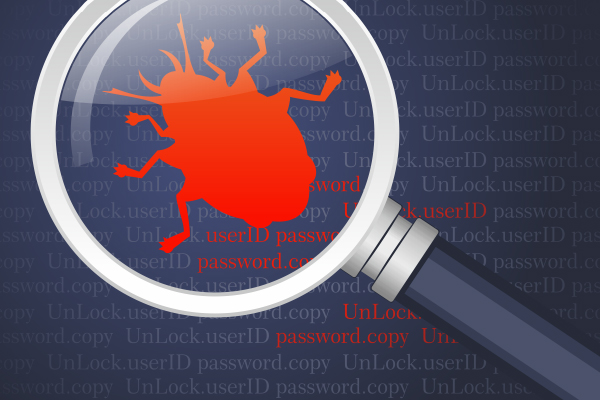ZERO TRUST APPROACH
Updated on October 22, 2022, by Xcitium
“Do not trust anything or anyone outside the network. Trust only the users and devices inside the network.” That was the old information security model or approach. This is no longer reliable because threats can come from within the network itself. There was a need for a better security model, and this gave birth to a zero trust approach. 
A zero trust approach to network security is to never trust anything unless verified. Every user or device trying to gain network access should pass authentication first. This proves their identity to the network, though their access still has limitations. A zero trust approach prevents the abuse of network privileges or rights. Imagine the consequences if an ordinary user gets admin level access. They could wreak havoc on the network and compromise its security. By default, users and devices should get limited access only. You will learn more about the concept of zero trust approach and its importance in the next section, as well as the benefits of zero trust security framework and its best practices.
Zero Trust Approach: IMPORTANCE
Why do you need to apply a zero trust architecture? The data of your business and your customers are important. Sensitive and confidential information should always be safe from threats. Security builds trust in a client-business relationship and increases productivity and profit. Here are a few reasons it is important to use a zero trust approach:
| Reasons | Description |
|---|---|
| Obsolete Security Model | Hiding a network asset behind a firewall does not secure it anymore. Authorized users and devices can launch an internal attack and steal your data. Disgruntled employees are often the source of internal attacks. They take their revenge by doing malicious things on the network. A zero trust approach secures your network from both external and internal threats. |
| Abuse of Access Rights | Internal threats are preventable through access limitations. Restricting authorized users and devices stop internal threats from happening. Users and devices only need the necessary privileges and access rights to do their tasks. They should not gain access rights outside their group policy. An ordinary employee should not be able to access financial files, and your network admins should not be able to access company confidential data. A zero trust approach enforces restrictions for threat prevention purposes. |
| Increased Attack Surface | An attack surface is the sum of all attack vectors. An attack vector is where an attacker can enter and extract data. This includes input fields, protocols, and services, among others. A zero trust approach decreases the attack surface. Each network component has some form of protection. The “never trust and always verify” principle always applies. |
Zero Trust Approach: BENEFITS
People invest their money on products that offer various useful features or benefits. This helps them make the right decision and gives them peace of mind. Here are a few of the benefits of using a zero trust approach:
| Benefits | Description |
|---|---|
| A zero trust approach provides security from all sides. | The old information security model only gives protection against external threats. A zero trust security framework protects you from internal, external, and unknown threats. The basic logic here is to never allow anything unless verified first. |
| A zero trust approach provides cloud data protection. | This refers to data in cloud storage. A zero trust security model is able to protect data regardless of its location. |
| A zero trust approach reduces business costs. | Hiring a staff of professionals is expensive. The maintaining, handling, and managing of IT services need people with expertise. The answer to this is to use cloud-based zero trust solutions. This will help you save time, money, and effort. The cloud service provider handles and manages the hardware and software for you. |
Zero Trust Approach: THE BEST PRACTICES
There’s a “divide and conquer” algorithm in computing. It divides a problem into smaller parts and keeps dividing it until it becomes easy to solve. A zero trust approach uses the same logic. Micro segmentation is the process of segmenting a network into smaller zones. Each of these zones has its own security controls. Here are a few more best practices when using a zero trust approach:
| Best Practices | Description |
|---|---|
| Promote Awareness | Everyone must learn about information security and their role in it. They need to understand that they are also a contributing factor to a zero trust approach. Providing information about network security in any form is advisable. |
| Enforce Multi-factor Authentication (MFA) | Having one process for identity verification is not enough. A zero trust approach uses two or more authentication methods. A solid authentication combination makes use of biometrics with a one-time password (OTP). OTPs expire right away upon using the code. Biometrics uses our unique physical features like fingerprints to confirm identity. |
| Record Credentials | Conducting an inventory of all users, devices, and their credentials is important. This is a critical step in network security. It is also good to have a clear view of authorized users and devices. This is a quick way of detecting an attacker. You’ll get a notification when someone is trying to access your network. |
| Scan for Vulnerabilities | You must always be looking for security holes or weaknesses in your network. This is crucial so you can apply patches before an attacker finds and exploits them. Vulnerability assessment is a standard security measure. |
Conclusion Of Zero Trust Approach
You now know what a zero trust approach is, its importance, and its benefits. You also learned the best practices when enforcing zero trust architecture. You are also aware of what zero trust security can do for your business. For more information on what a zero trust approach is, please click here.





